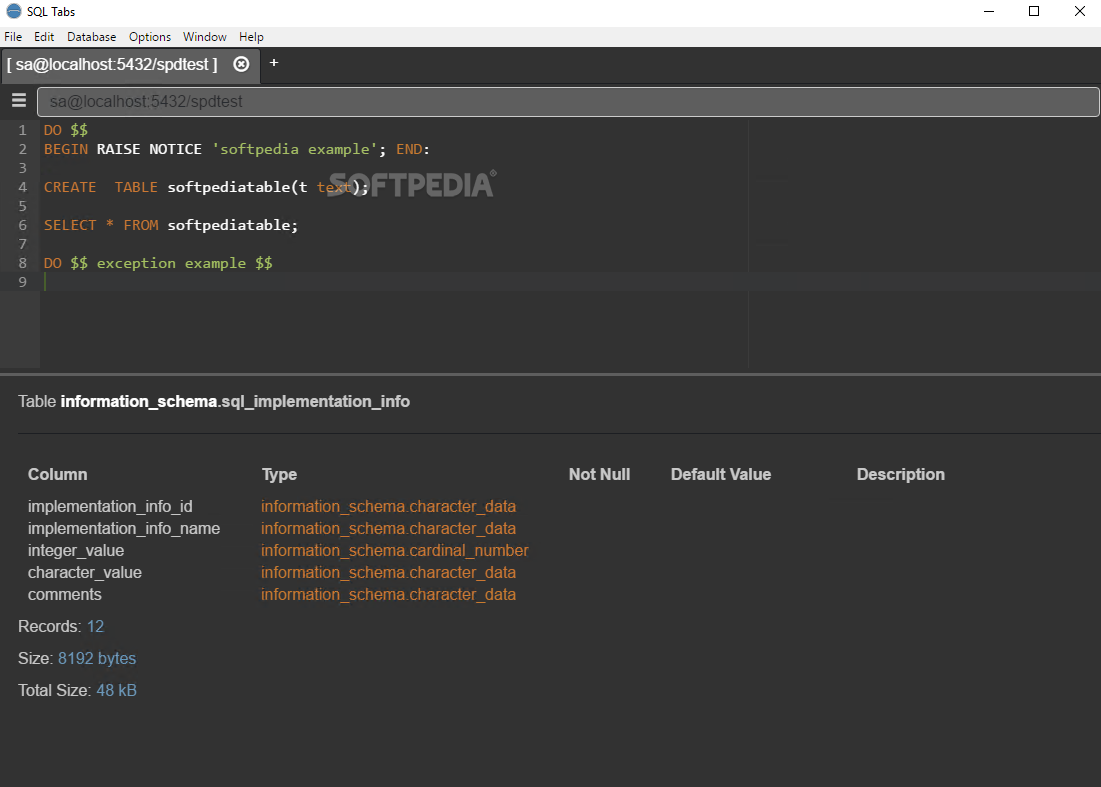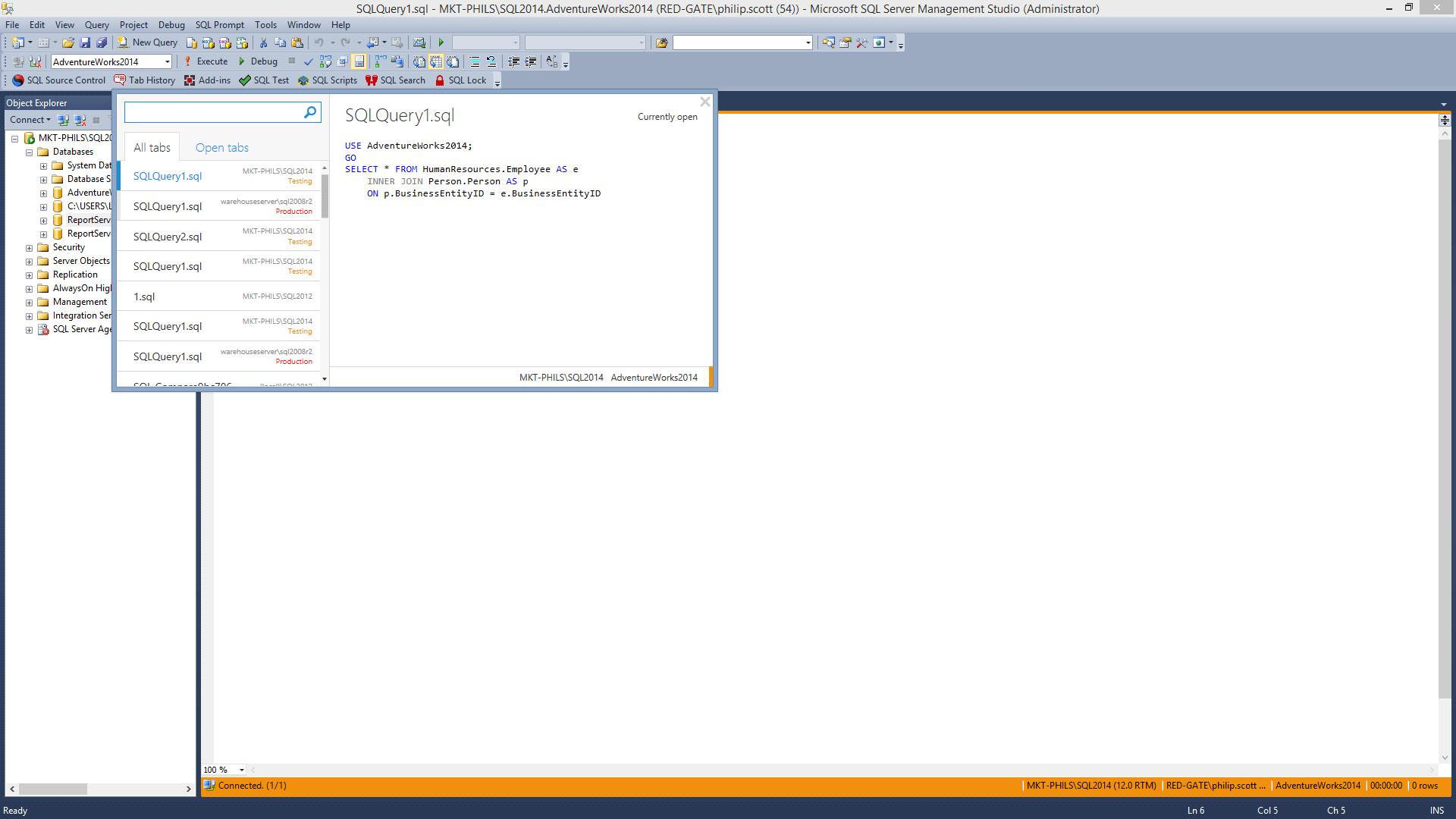

- Sql workbench save multiple sql tabs how to#
- Sql workbench save multiple sql tabs update#
- Sql workbench save multiple sql tabs full#
Thus if that is the question, killing the (database) session should not mean you cannot subsequently save your work.Īlternatively you can simply wait for the database actions to complete (e.g. ), then in theory once the db session is “killed”, the SQL Developer app would normally “unlock” and then it would be possible to go about life without losing any work, as SQL Developer hasn’t actually frozen or crashed, it normally just becomes unresponsive while waiting for the query to return, and it will “return” when the db session is killed. Now… if by “killing the session” they meant physically killing the database session (e.g.
Sql workbench save multiple sql tabs how to#
The OP asked how you can save your work before killing the session, so I’m adding this for anybody else arriving here as I suspect that 4 years is a long time to wait to find out how to save your work 😉 It is however unresponsive to any user interaction in the meanwhile. I say “apparently” locked because it hasn’t frozen as such, it is just waiting to be able to continue, and will eventually return. The UI will then lock and remain non-responsive until the query completes. query the database in a separate (shared connection) window, or try to inspect database tables, views or other objects on that same connection in the db “connections” panel. Try to do anything else in sql developer using that same database connection (e.g. My thanks to all involved.Īs per the question about the UI locking from running more than one query against the same db session, this to my knowledge has *always* caused the UI to “apparently” lock and is easily demonstrated: run a query (that will execute over many minutes before returning) using a database connection. Firstly, I have been using sql developer for many many years now and greatly appreciate the work that has gone into it over the years. I know this question is from 4 years ago, but it is still relevant today. Also as stated previously, the behavior is intermittent. The select statement at the end seems to show the rolled back state of the table even though the select happens before the rollback. SET next_index_due_date = TO_TIMESTAMP (’′, ‘DD/MM/YYYY’), JOIN client_acct_rltnshp ON carb_id = car_id The entire script is run by selecting all (Ctrl + a) and then (Ctrl + Enter)
Sql workbench save multiple sql tabs update#
There is one select followed by an insert statement, 6 update queries and then the same select once again – followed by rollback. Run Script runs the contents of the worksheet (or what’s highlighted) as a ‘script.’ What does that mean exactly? Think of this as being equivalent to running this in SQL*Plus:
Sql workbench save multiple sql tabs full#
Scroll down, or hit Ctrl+End to force a full fetch and get all your rows back. You’ll then see most of your ad hoc queries complete with a single fetch.

Every query ran will come back with the first 500 rows, and rows will be continued to be fetched in 500 row increments. To alleviate this, increase your fetch size to 500. The process on the server that was used to execute the query is still hanging around too.

The user sees 50, 100, 500, etc rows come back, but SQL Developer and the database know that there are more rows waiting to be retrieved. Run statement brings your query results to a grid with a single fetch. Ok, before I went on the Fetch tangent, I said there were two ways to run statements in SQL Developer: Run Statement If you have a 10 row query or a 1,000,000 row query, this can mean 1 or many fetches in groups of records. But, to get the data back to the user, the fetch must occur. Technically it has to do at least 2 things, and sometimes only 1. What is Fetch?Īfter you run send your query to Oracle, it has to do 3 things: But there are some other, more subtle differences here, primarily around fetching. There are some obvious differences between the two features, the most obvious being the format of the output delivered.


 0 kommentar(er)
0 kommentar(er)
